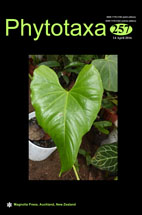Abstract
Two species endemic to California in the western United States, Navarretia crystallina and N. miwukensis, are here described. Both species occur on soils derived from pyroclastic flows. N. crystallina is distributed more widely, generally at higher elevations, and occurs predominantly to the north and east of N. miwukensis. Though similar in habit to N. divaricata and N. prolifera, N. crystallina and N. miwukensis can be distinguished consistently from both of these species by inflorescence structure, bract lobing, and flower size, and from each other by bract and calyx lobe shape, inflorescence indumentum, and stamen insertion. The species are also distinguishable by DNA sequences.

